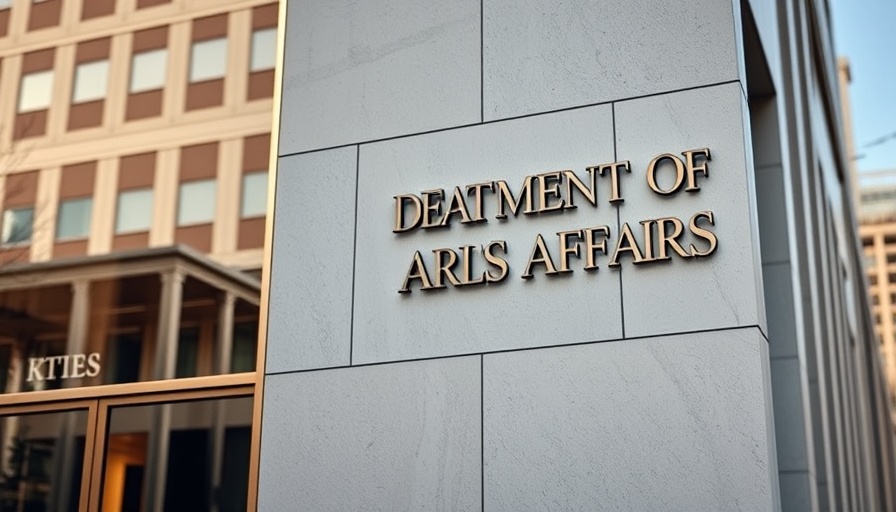
Exploring DOGE's AI Push: A Game-Changer for the Department of Veterans Affairs?
In a bold move reshaping the bureaucratic landscape, Elon Musk's Department of Government Efficiency (DOGE) is making waves at the Department of Veterans Affairs (VA). This initiative, primarily aimed at streamlining agency operations, has garnered both attention and concern as it seeks to integrate advanced technology, particularly artificial intelligence (AI), into government processes.
Understanding the Context: What is DOGE?
DOGE is Musk's ambitious program intended to transform federal agencies by applying a startup mentality—prioritizing efficiency, agility, and rapid technological integration. Underneath this vision lies a controversial implementation approach: the hire and engagement of tech-savvy operatives, often without extensive experience in traditional governmental operations. This has led to apprehensions among current VA staff, who feel their roles and the agency's integrity are at risk.
New Faces at the VA: Who is Sahil Lavingia?
A focal point in the DOGE takeover at the VA is Sahil Lavingia, who has drawn scrutiny since his arrival. Identified as an adviser to the chief of staff, his unorthodox methods have raised numerous red flags. Accessing the VA's GitHub platform, he reportedly sought to implement an AI tool named OpenHands to expedite coding processes, a move that could revolutionize how the VA operates. However, for many staffers, this shift feels disconcerting, as no one seems entirely aware of the consequences such an integration could unleash.
The Human Element: Examining Employee Reactions
Employees at the VA have expressed concern regarding their roles in the wake of DOGE's influence. Many feel overshadowed by operatives who lack direct experience in managing federal systems. This dynamic raises significant questions about employee job security as well as the potential for AI to disrupt established workflows. Moreover, the opacity surrounding these changes has led to anxiety throughout the workforce, amplifying fears about privatization and mass layoffs.
The Pros and Cons of AI Integration
The incorporation of AI, such as Lavingia's proposed OpenHands tool, could streamline various functions at the VA, potentially transforming how veterans access services and benefits. However, there are genuine risks associated with hastily pushing technology into complex systems. Critics warn that technology-driven changes should be bolstered by a corresponding investment in employee training and public transparency.
Future Predictions: The Optimistic and Pessimistic Viewpoints
If handled correctly, DOGE's push toward technological advancement could enhance efficiency, allowing VA personnel to dedicate more time to veterans rather than administrative tasks. Conversely, should this initiative proceed without adequate oversight, it could create insurmountable fractures in service delivery, alienating those who depend on VA services. The stakes are high, and the results will ultimately dictate the future of veterans’ care.
The Broader Implications: Technology Meets Governance
This situation at the VA reflects a broader trend where the lines between technology and governance blur. As more agencies consider adopting similar strategies, lessons learned from DOGE's initiatives will be crucial. If they succeed, we may witness a wave of modernization across federal agencies. If they fail, the repercussions could set back governmental efficiency and public trust for years to come.
Now, as the landscape continues to evolve, industry leaders and policymakers must reflect on the ethical implications behind such technological integration within public service. As debates unfold, stakeholder dialogue needs to focus on maintaining transparency and preserving the mission to deliver essential services to veterans effectively.
If you’re invested in how technology shapes our government and aids in public service, consider advocating for inclusion and engagement, pushing for a balanced approach that doesn’t merely prioritize efficiency at the expense of workers and service quality.
 Add Row
Add Row  Add
Add 




 Add Row
Add Row  Add
Add 

Write A Comment